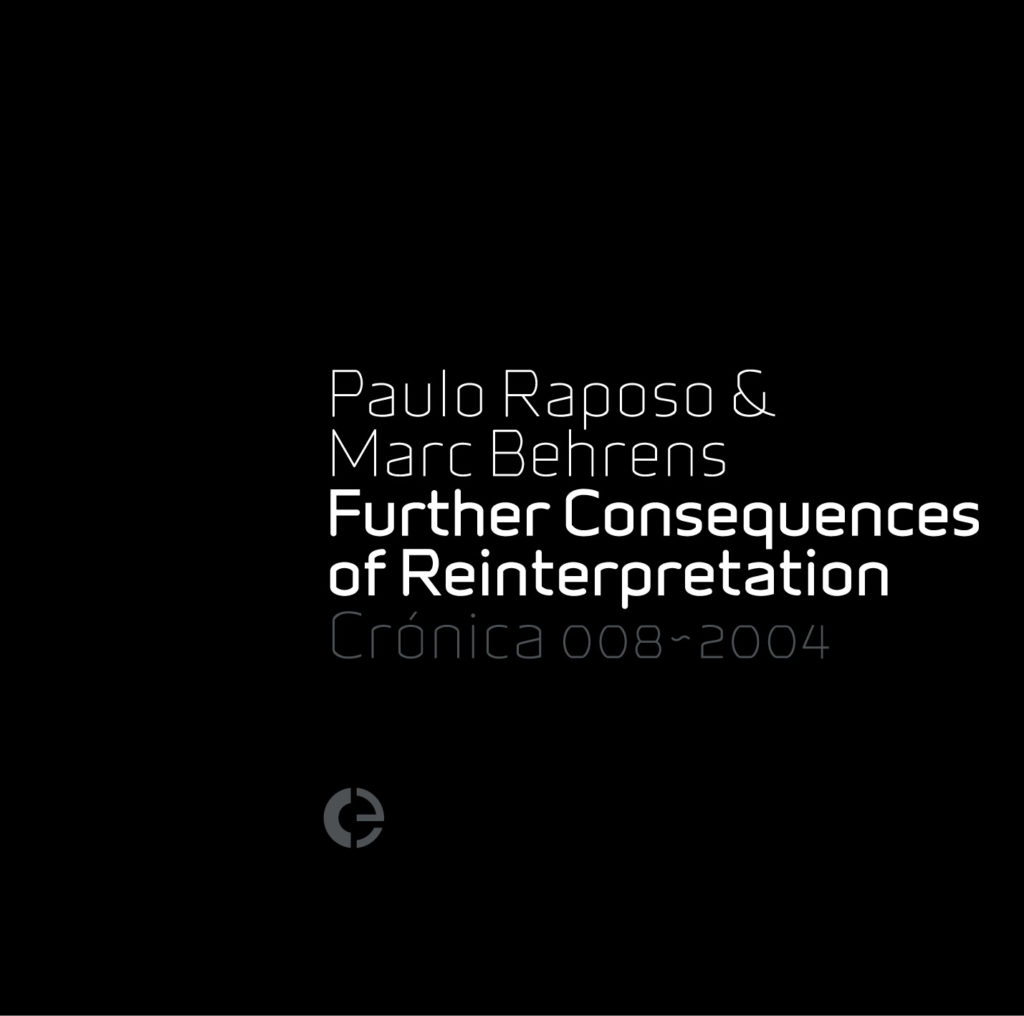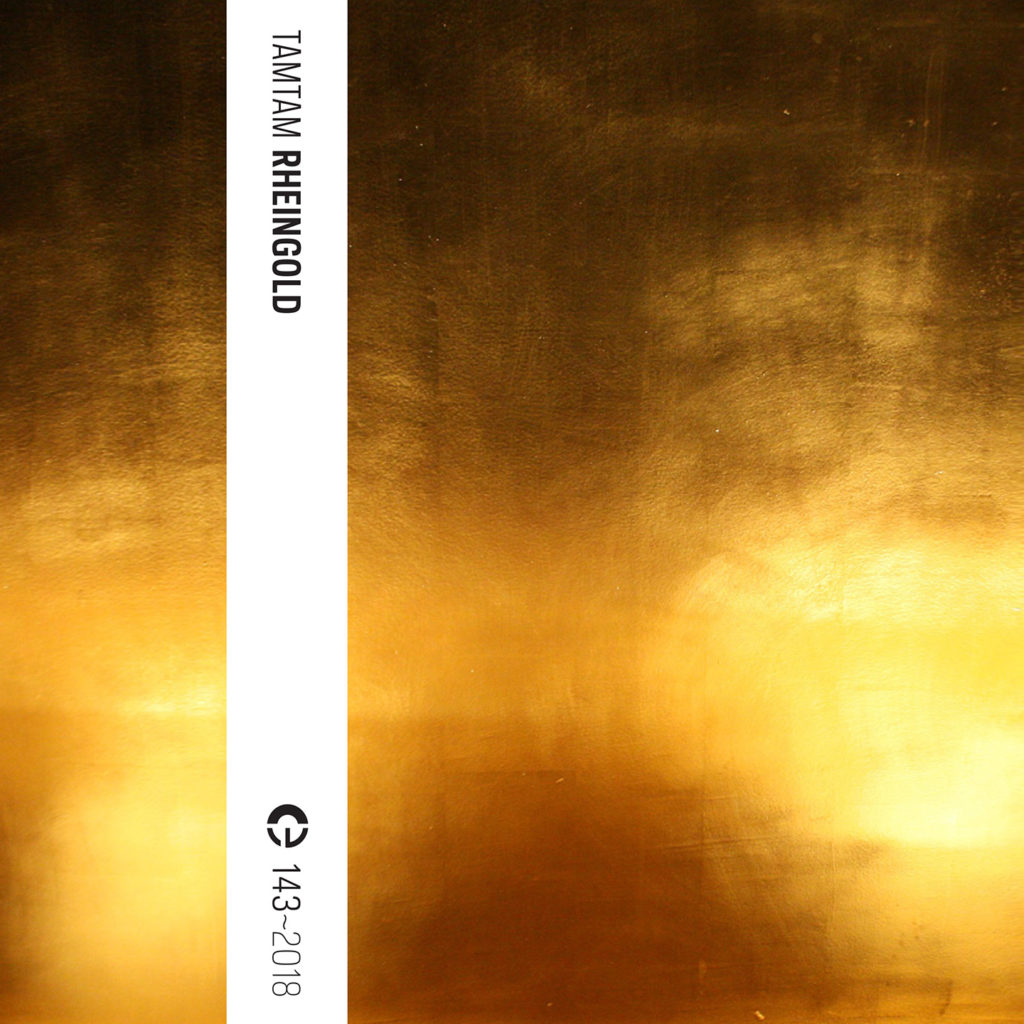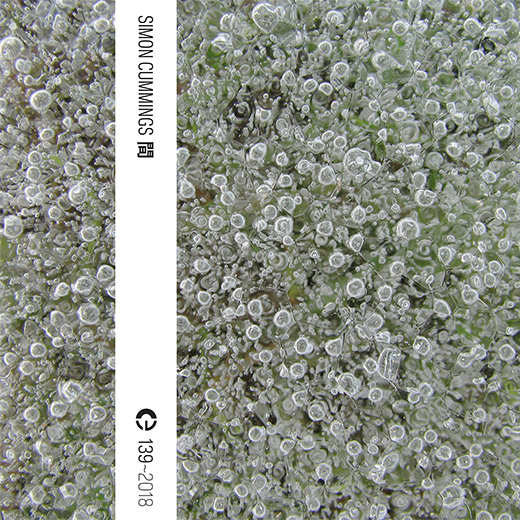SÃria’s “Cuspo†reviewed by Vital

While I had not heard of SÃria before, I did hear Diana Combo, who is behind SÃria, when she works as Eosin (see Vital Weekly 1131). Cronica writes that “in this project [she] joins her voice to the usual practice of combining vinyl records and field recordings, in a gesture of appropriationism that she has been presenting as EOSIN”, which begged the question for me: what is the difference then between SÃria and Eosin? Right, there is the addition of voice. Ah. I wasn’t blown away by her previous release, which seemed to me nothing more than a DJ set; here at least she takes matters a bit further and this time around the vinyl sources aren’t easily recognized and in some case I would think that musicians gave her recordings to use, just as Svarte Greiner, Antoine Chessex or Joe Colley. I am not sure if there is something lifted from records, but who knows? Throughout these nine pieces are mostly introspective with a few sounds per piece, sea waves washing ashore, some crackles, a drone and with the voice of SÃria improvising on top of that. She controls her voice quite a bit, creating more dreamy poetic sounds than something very open or loud. I quite enjoyed this release, especially on the second side there were some great pieces; I am not sure which, I believe ‘Gloria’ or ‘Senhora Do Almortao’. (FdW)
via Vital Weekly
SÃria’s “Cuspo†reviewed by FBI Radio

Diana Combo, previously known as Eosin, makes music using vinyl records, field recordings and occasional droney noisemakers of her own along with her vocals. Her new album for Portuguese experimental label Crónica sees her creating beautifully mysterious compositions using a series of avant-garde and experimental works from vinyl, crossing the experimental cello & drones of the great Svarte Greiner with the avant-garde composition of Antoine Chessex on the first track, and the spaced-out guitar & drones of Los Niños Muertos (André Tasso and Bruno Humberto) on the second – which incidentally really is a cover of the Patti Smith classic. Punk as fuck.
“Further Consequences of Reinterpretation†reviewed Fluid Sonic Fluctuations

Hi, I’m back again with another new review, today it’s this 2004 album of Reinterpretations of remixes of music by *0 by Paulo Raposo & Marc Behrens, titled Further Consequences of Reinterpretation. Released by the label Crónica the CD is housed in a clear jewel case and also includes an 8 page booklet with 7 Reinterpretations of the album cover typography, some of them in a pretty fun DIY style kind of playfulness.
As the title says, this album features remixes of remixes, or “Reinterpretations†as they’re called here of an experiment by Japanese artist Nosei Sakata (*0) who released a CD of sound outside of the human hearing range, a particularly interesting kind of sound art that I would definitely like to check out later. However, I’m starting my review at the end of the road of the remixing of that material, that happened. The Further Consequences of Reinterpretation, based on Reinterpretations of *0’s work by sound artists like Taylor Deupree, Richard Chartier and Bernhard Günter is a CD containing 21 untitled tracks, which are the finished pieces (as the back lists) created by Paulo Raposo & Marc Behrens by bouncing their sound material back and forth, that was premiered at a show at the auditorium of the Goethe-Institut Inter Nationes in Lisbon, carrying the same title. Now, unlike the albums I reviewe before, this obviously more of a flowing experience to listen to, rather than a traditionally compiled album. Many of the 21 tracks are short, but these all do form a rather nice sounding whole, a collection of music that falls both into the glitchy minimal side of Sound Art, as well as more atmospheric yet also mysterious Drone. Characteristic sounds on this CD are crackling “wooden†sounds, high pitched tones, often rising and falling in loudness in “wavesâ€, stereo glitches, low rumbles as well as sometimes nicely “alien†sounding structures of glassy and metalic heavily manipulated sounds. The album feels like a mixture of longer developing percussive pieces with mid frequency drones as well as sometimes some low rumble and shorter more minimal percussive structures. Sometimes noise is also used in surprising bits, you’ll find out when you listen to this in full. I will mention a few of the longer tracks here and point out some things I particularly liked, let’s start with track 1. This track was originally released as >0 on the *0.000remix-Inflation album on the Mu-Label in Japan. It can be seen as a kind of base of the sound of this CD, it has all ingredients as well as an exciting dynamic between the wooden percussive sounds, glitches, tones and drones. There’s a nice progression in here too which goes from a minimal and percussive first half to a more drone based second half. It is definitely rather minimal music but never boring. Track 14 has some great quickly buzzing glitches and metallic industrial sounds, very nice clouds of impulses, a very cool aural experience and also probably a strange feel on the ears on headphones. Track 16 is also really fun as sounds get manipulated with often very quirky, almost psychedelic sounding filter effects, it’s like a really strange device being both high-tech as well as old-fashioned, steampunk in sound. Track 21 is a definite favourite track of mine, the closing piece very pleasantly flows as a drone infused with filtered bit-crushed sounding mid frequencies, sounding the most like Ambient of the whole CD, but an alien metallic kind of Ambient. Really nice music. I feel this CD has a great and interesting sonic texture to it, but I do have to point out my only little low point with it. Some sonic material does get reused on multiple tracks and I didn’t find it unpleasant really, however it does give the CD some repetition at some points, with the same sounds appearing in almost identical structures a couple of times. This is more of a personal thing though, because I also feel that the subtle variations between these similar pieces are interesting. Overall though, solid, enjoyable and fun CD definitely.
Further Consequences of Reinterpretation is an enjoyable and well-crafted collection of Sound Art, Glitch and Drone infused music that makes for a great listening experience, preferably in a dark quiet room (or any other situation you prefer) and the variation, playful sonic manipulation and inventive composition do make this a recommended album for both Experimental music and Sound Art fans as well as listeners new to this style. Orlando Laman
SÃria’s “Cuspo†reviewed by Toneshift

The collective Portuguese label Crónica has been bringing cutting edge, genre defying music since 2003 – and no signs of stopping here. This is SÃria‘s debut (aka Diana Combo) and its an assortment of collaborations – field recordings, voice and vinyl records. At first, on Por Riba, (partly recorded by John Grzinich) it’s quite a soothing, almost meditative blend of silky song and lightly vibrating drone electronics, with some subtle percussion. The setting is spare and dreamy, though it seems like we are in daylight in this adaptation from a recording of Catarina Chitas by Michel Giacometti.
Her use of field recordings on A Lua da Eva emphasize that the most simple day-to-day sounds really can fit into the context and texture of a song with music by Lemures. And however fleeting and retrospective, these feel like songs to me, albeit non-traditional songs that are made up of disparate effects: from open circuits to buzzing crickets to lapping water and people speaking to each other in the background.
There’s an intense stillness to a track like Canção da Mulher Cão with its simple crackle and lightly shifting chords, her voice entering like a lullaby. It was written for performance with music by Birds of Delay and Antoine Chessex. The title translates to “Song of the Dog Woman†which offers even more mystery – is she an ancient diety, or someone who rescues strays? In her whispers that wrap between distended organ chords, there’s a relegated innocence to the hushed space.
“The lyrics and melodies emerged and took shape spontaneously and rapidly, being the fruit of a prolonged thought about what seems more banal, or more eminent, or more obscure. Only later were added the layers of vinyl records and other recordings that accompany each moment or episode of this serene tidal wave.â€
Describing the sound she’s made here is pretty spot-on, though the practical and the intangible collide softly as I continue my deep listening from the luxe Raiva into the slightly more foreboding Amor de Quem where a depressed guitar hum rides low with additional vocal treatment of echoes. It’s a gray area, this unspoken love from who?
On Gloria, which flows into the previous track, Combo sings in English for the first time about “Jesus died for your sins..†being freely adapted from Patti Smith. It’s the first time where a semblance of a beat pops up, it’s a sing-song style with a chant guise. As it drifts away my standout track tacitly surfaces, Senhora do Almortão -adapted from Lavoisier‘s version of this traditional song. With music by Svarte Greiner another mystery lady materializes, and I’d like to keep it that way in all its silencing spectacle.
This same inebriating wash of meditative music continues to flow expertly into the ambience of Maremoto. With music from Luciano Cilio the ocean seems to be cresting as her echo-ey song drifts from top to mid to background, sinking into the open waves and vinyl imperfections that fade in and out. Finally on the title cut she works with one of those rare artists who aren’t heard from often enough, Joe Colley.
A dizzying piece with echoes and sound effects, mixed, layered, cut-up and collaged back together, the faded and unexpected mirroring the smooth cerebral and emotive voice. A sensual, elusive work that could be played for hours on end to sooth the daily grind of virtual savages and ward off other creeps. I’m lost in music, one of the best tapes for 2018! TJ Norris
via Toneshift
Soon in Crónica: Tamtam’s “Rheingoldâ€
New release: SÃria’s “Cuspoâ€

It happened as if it had been unwittingly, but wanting it.
It was the proposal to make a version of the song Gloria for a play, and to write and sing an original for another play, by the same author, that paved the way to the transformation of life episodes into texts to be sung.
The lyrics and melodies emerged and took shape spontaneously and rapidly, being the fruit of a prolonged thought about what seems more banal, or more eminent, or more obscure. Only later were added the layers of vinyl records and other recordings that accompany each moment or episode of this serene tidal wave.
The idea behind this sequence was to serve as study and sharing material for live performances. However, at the invitation of Crónica Electrónica, it was then developed for this edition, just after the project’s premiere at Passos Manuel, in Porto, in the context of Natal dos Experimentais 2017.
“To me it feels like an anchor, like instants of bridges or doors from reality to other worlds, like in those films when there is an alternation between images that the character is contemplating and images of huge nature fluids phenomena like dust winds or rivers or wind in the trees, between day and night. It inspires to make effort to learn Portuguese.†– Hugo Hyart
SÃria is Diana Combo, who in this project joins her voice to the usual practice of combining vinyl records and field recordings, in a gesture of appropriationism that she has been presenting as EOSIN.
This tape could only be made thanks to the support, enthusiasm and inspiration that I have received from certain people, places and times. Life with its ups and downs has provided the matter and tools to transform sadness, rage, indignation and sense of stagnation into songs. It became a fulltime job, because “Joy is the most serious thing in lifeâ€. (Almada Negreiros)
Tracklist:
- Por Riba (04:10)
- A Lua da Eva (08:32)
- Canção da Mulher Cão (07:02)
- Raiva (05:36)
- Amor de Quem (04:13)
- Gloria (04:46)
- Senhora do Almortão (04:54)
- Maremoto (03:32)
- Cuspo (07:56)
Credits:
- Por Riba: adapted from a recording of Catarina Chitas by Michel Giacometti, harmonium and cymbals played by me and recorded by John Grzinich.
- A Lua da Eva: with music by Lemures.
- Canção da Mulher Cão: with music by Birds of Delay and Antoine Chessex; written for the theatre performance Nova Criação presented at TNDMII in 2016, a co-creation by Ãgata Pinho, LÃgia Soares, Sónia Baptista and me; from the song O Amor é um Gajo Estranho, by Pop Dell’Arte.
- Raiva: with music by Lemures and Antoine Chessex.
- Amor de Quem: with music by Svarte Greiner and Antoine Chessex.
- Gloria: adapted from Patti Smith’s song, with music by Los Niños Muertos (André Tasso and Bruno Humberto), produced and edited by me; written for the theatre performance O Fosso dos Heróis, by Ãgata Pinho, presented at TNDMII in 2015.
- Senhora do Almortão: adapted from Lavoisier’s version of this traditional song; with music by Svarte Greiner and cymbals played by me and recorded by John Grzinich.
- Maremoto: field recording found on the web and music by Luciano Cilio.
- Cuspo: with music by Joe Colley.

Cuspo is available as a limited-release tape and as a download.



